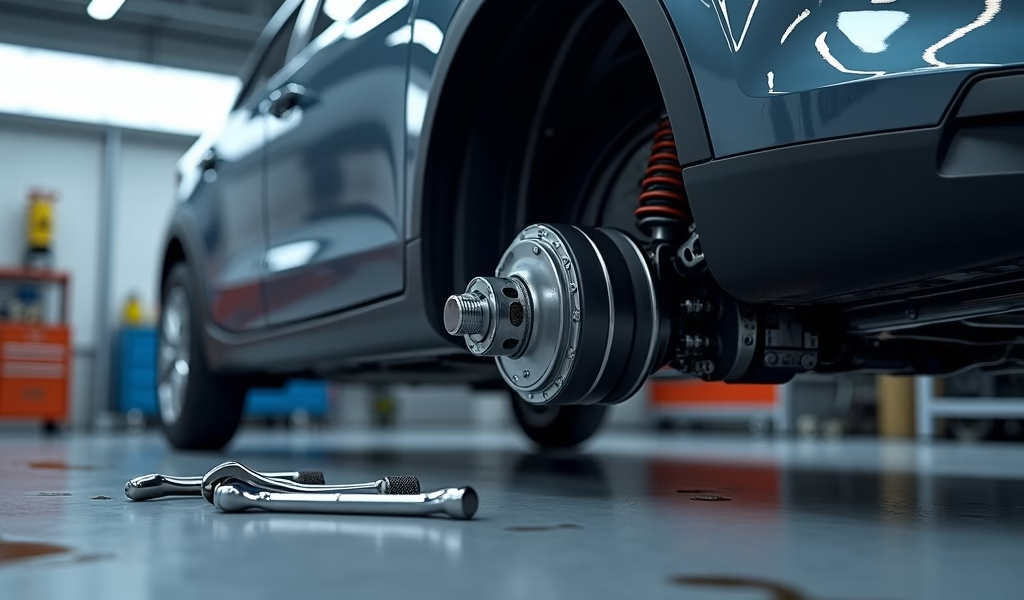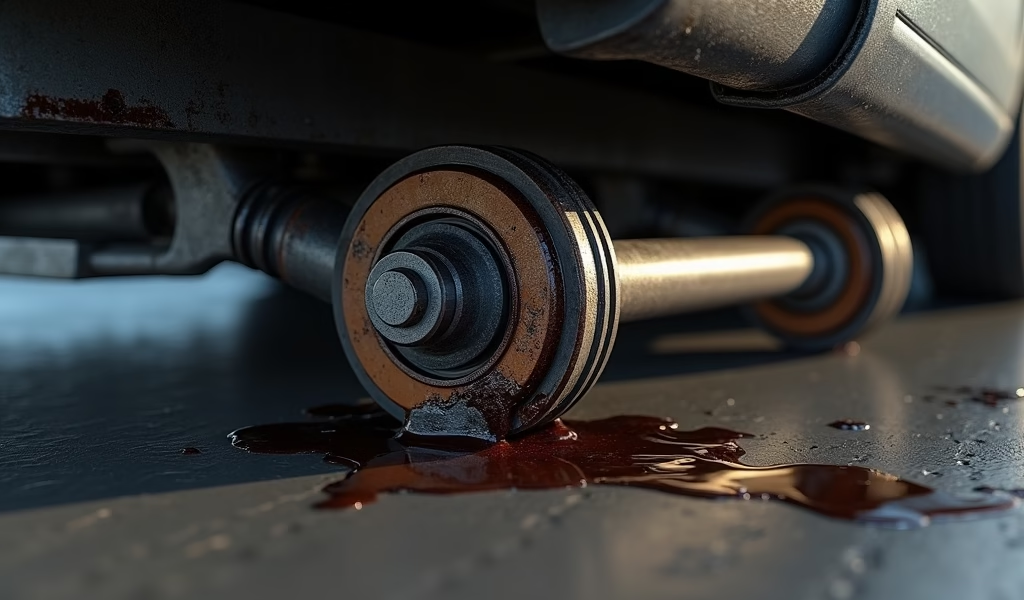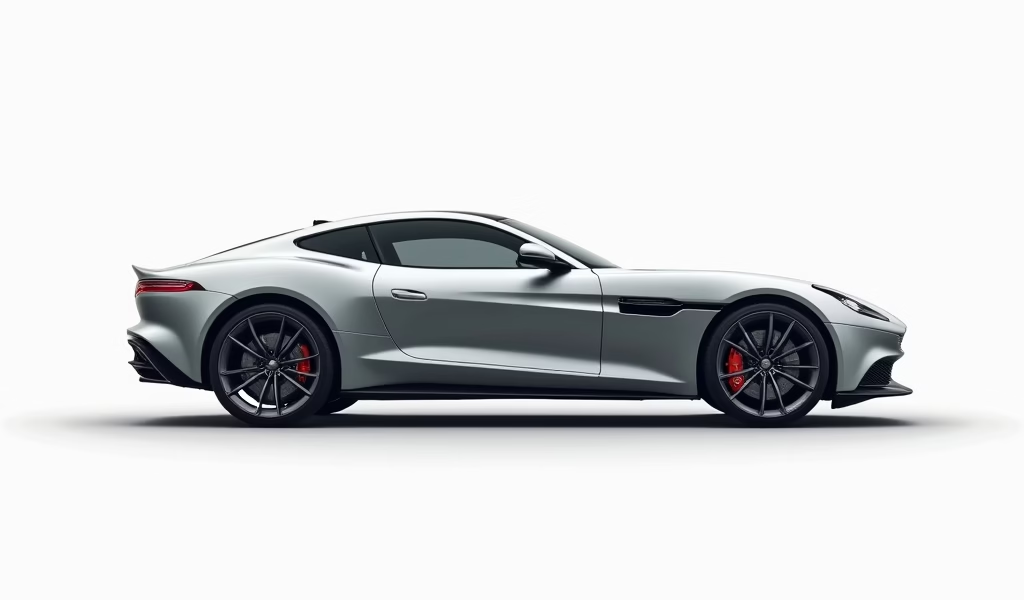Overview
The article explains how CV joint angle limitations affect vehicles with modified suspensions, presenting five solutions: proper joint replacement, CV spacers, suspension geometry adjustments, high-angle CV upgrades, and driveline angle correction. Regular inspection and understanding that vehicle modifications require complementary drivetrain adjustments are essential for preventing costly breakdowns and ensuring long-term reliability.
Table of Contents
- Understanding CV Joint Angle Limitation
- Common Symptoms of CV Joint Angle Problems
- Fix #1: Proper CV Joint Replacement
- Fix #2: CV Spacers and Adapters
- Fix #3: Adjusting Suspension Geometry
- Fix #4: High-Angle CV Joint Upgrades
- Fix #5: Driveline Angle Correction
- Preventative Maintenance Tips
- Conclusion
- Frequently Asked Questions
Understanding CV Joint Angle Limitation
CV joint angle limitation is one of those sneaky issues that can leave you stranded if you’re not careful. As a mechanic for over 15 years, I’ve seen countless drivers roll into the shop with clicking noises during turns, only to discover their CV joints are crying out for help.
So what exactly is a CV joint? Think of it as the flexible connection that transfers power from your transmission to your wheels while allowing them to move up, down, and turn. These mechanical marvels—constant velocity joints—are designed to maintain consistent rotational speed even as the suspension moves through its travel.
The problem starts when these joints are forced to operate at angles beyond what the manufacturer intended. Your stock vehicle came with CV joints engineered to work within specific parameters, typically allowing for 18-24 degrees of movement. Push beyond that limit, and trouble follows.
Most CV joint angle issues I see in the shop stem from suspension modifications. That lift kit you installed might look awesome, but it could be forcing your CV joints to operate at extreme angles they weren’t built to handle. It’s like asking someone to work all day with their arms stretched above their head—eventually, fatigue and damage are inevitable.
Common Symptoms of CV Joint Angle Problems
Before we dive into fixes, let’s talk about how to spot CV joint angle issues before they leave you stranded on the side of the road. Your vehicle will usually give you several warning signs that something’s not right.
The most common symptom is a clicking or popping noise during turns. This sound typically gets louder during sharper turns and can be more pronounced when accelerating through a turn. If you hear this telltale clicking, don’t ignore it—your car is literally begging for help!

Fix #1: Proper CV Joint Replacement
Sometimes the simplest solution is the right one. If your CV joints have already suffered damage from operating at extreme angles, replacement might be your best first step. Think of it as starting with a clean slate before addressing the underlying causes.
When replacing CV joints, you’ll face the classic question: OEM or aftermarket? Original equipment parts match factory specifications exactly but come with a heftier price tag. Aftermarket options from reputable brands can save you 30-50% while offering comparable quality. Some even feature enhanced designs for modified vehicles.
The CV joint boot replacement kit is often overlooked, but it’s crucial to install new boots rather than reusing old ones. These rubber boots keep grease in and contaminants out—they’re the CV joint’s first line of defense.
During installation, attention to detail makes all the difference:
- Ensure proper spline alignment before final assembly
- Torque all fasteners to manufacturer specifications
- Apply fresh CV joint grease thoroughly and evenly
- Position the joint to minimize operating angle where possible
According to a Society of Automotive Engineers study, properly installed CV joints can last 100,000+ miles under normal conditions, but excessive angles can reduce that lifespan by 60-70%.
Fix #2: CV Spacers and Adapters
For vehicles with mild to moderate lift kits (typically 2-3 inches), CV spacers offer an affordable and relatively straightforward solution. These machined components create additional distance between the differential and CV joint, effectively reducing the operating angle.
Think of spacers as repositioning the starting point of your joint’s movement. By shifting where the joint begins its motion, you can keep it working within a more favorable range of angles throughout suspension travel.
When installing CV spacers, keep these tips in mind:
- Select the appropriate thickness for your specific lift height
- Use high-grade hardware with thread locker
- Torque everything to spec—no guesswork!
- Check for vibrations after installation, which might indicate alignment issues
The beauty of spacers is their cost-effectiveness compared to more extensive modifications. Most quality spacer kits run between $100-200, making them an attractive first step for many lifted truck owners.
That said, spacers aren’t a perfect solution. They add rotating mass to your drivetrain and create another potential failure point. For daily drivers with modest lifts, they’re often sufficient, but serious off-roaders might need to look at more comprehensive solutions.
Fix #3: Adjusting Suspension Geometry
Sometimes the best approach is addressing the root cause—improper suspension geometry. Many lifted vehicles suffer from CV angle issues because the entire suspension geometry has changed while the drivetrain remains in its original position.
Adjustable control arms are your best friends here. These allow you to fine-tune the positioning of your suspension components to bring CV joints back to favorable operating angles without sacrificing your desired lift height.
For more significant lifts, consider these additional modifications:
- Drop brackets that reposition control arm mounting points
- Adjustable track bars to maintain proper axle centering
- Extended bump stops to prevent over-articulation
- Caster correction to optimize suspension geometry
After making these adjustments, don’t skip the professional alignment. A qualified alignment technician can verify that your suspension geometry is optimized not just for tire wear but also for proper CV joint angles.
In my years at the shop, I’ve seen countless customers try to save money by installing lift kits without the necessary supporting modifications. It’s like buying expensive running shoes but skipping the proper insoles—you might look good initially, but you’ll pay for it with pain later!

Fix #4: High-Angle CV Joint Upgrades
For serious off-roaders and performance enthusiasts who need maximum articulation, specialized high-angle CV joints represent the gold standard solution. These heavy-duty components are specifically engineered to operate at more extreme angles than their stock counterparts.
High-angle CV joints typically feature larger bearings, modified cage designs, and enhanced materials that allow for articulation angles of up to 32 degrees (compared to 18-24 degrees for stock joints). They’re built to withstand the punishment of extreme off-road use.
Premium manufacturers like RCV Performance and Chromoly produce complete axle assemblies designed for modified vehicles. While these solutions come with a significant price tag—often $800-1,500 per axle—they provide unmatched durability and peace of mind for those who push their vehicles to the limits.
A buddy of mine who runs rock crawling events swears by his high-angle CV setup. “I haven’t had to worry about my drivetrain in three years of hardcore wheeling,” he told me. “The upfront cost seems high until you calculate what you save in downtime and repairs.”
The driveshaft universal joint replacement might also be worth considering as part of a comprehensive drivetrain upgrade, especially for vehicles with significant lift modifications.
Fix #5: Driveline Angle Correction
The most comprehensive approach involves looking at your entire driveline as an integrated system. This holistic method recognizes that CV joint angles are just one part of a complex drivetrain geometry puzzle.
Proper driveline angle correction requires measuring and adjusting multiple components:
- Pinion angles at the differential
- Driveshaft operating angles
- CV joint positioning throughout suspension travel
- Transfer case output alignment
This approach typically requires specialized tools like digital angle finders and inclinometers to measure precisely. While ambitious DIYers might tackle some aspects, comprehensive driveline correction usually warrants professional expertise.
According to Motor Magazine’s driveline specialists, properly aligned driveline angles can extend component life by 30-50% and eliminate vibration issues that plague many lifted vehicles.
The investment in professional correction might seem steep initially, but the long-term savings in component longevity and reliability make it worthwhile, especially for daily drivers with significant modifications.
Preventative Maintenance Tips
An ounce of prevention beats a pound of cure—especially when that “cure” might leave you stranded miles from nowhere. Here are my top preventative maintenance tips to keep your CV joints happy:
- Inspect your CV boots regularly for tears or grease leakage
- Listen for clicking noises during sharp turns
- Address minor issues before they become major failures
- Research thoroughly before modifying your suspension
- When replacing suspension components, choose quality parts that maintain proper geometry
I recommend having modified vehicles inspected professionally at least once a year. A trained eye can spot developing issues before they leave you stranded.
For vehicles that see off-road use, consider more frequent inspections. The extreme articulation during off-road adventures places additional stress on your CV joints—catching problems early can save you from costly trail repairs.
Conclusion
CV joint angle limitation might sound like a complex technical issue, but it boils down to something simple: these critical components need to operate within their designed parameters to function reliably. When we modify our vehicles’ suspension, we change those parameters, often pushing CV joints beyond their limits.
The good news? You don’t have to choose between your desired vehicle stance and drivetrain reliability. The five solutions we’ve explored provide options for every budget and use case:
- Proper CV joint replacement provides a fresh start
- CV spacers offer a cost-effective solution for moderate lifts
- Suspension geometry adjustments address the root causes
- High-angle CV upgrades provide maximum capability for serious users
- Driveline angle correction takes a comprehensive approach
Remember, your vehicle is a system of interconnected parts. Modifying one aspect without considering the impacts on others is a recipe for trouble. Whether you’re lifting for off-road performance or simply for that head-turning stance, taking the time to address CV joint angles will save you money and headaches in the long run.
Your vehicle’s smooth, click-free cornering is worth the effort. Trust me—I’ve seen too many customers learn this lesson the hard way on the side of the road!
Frequently Asked Questions
How do I know if my CV joint angle is too extreme?
Listen for clicking or popping noises during turns, especially when accelerating. You might also notice vibrations or shuddering during acceleration if the CV joint is operating at excessive angles.
Can I drive with a bad CV joint?
You can temporarily, but it’s risky as complete failure could happen suddenly and leave you stranded. It’s best to address CV joint issues as soon as you notice symptoms.
Will spacers fix my CV joint angle problems after installing a lift kit?
For moderate lifts (2-3 inches), CV spacers often help reduce operating angles to acceptable levels. More significant lifts typically require additional suspension geometry corrections beyond just spacers.
How much does it cost to fix CV joint angle issues?
Costs range from $200-300 for spacers to $800-2,000 for complete high-angle CV joint upgrades. The appropriate solution depends on your vehicle’s modification level and intended use.
Are aftermarket CV joints as good as OEM?
Quality aftermarket CV joints from reputable manufacturers can offer comparable performance to OEM parts, sometimes with enhanced designs for modified vehicles. Stick with known brands and avoid the cheapest options for best results.

